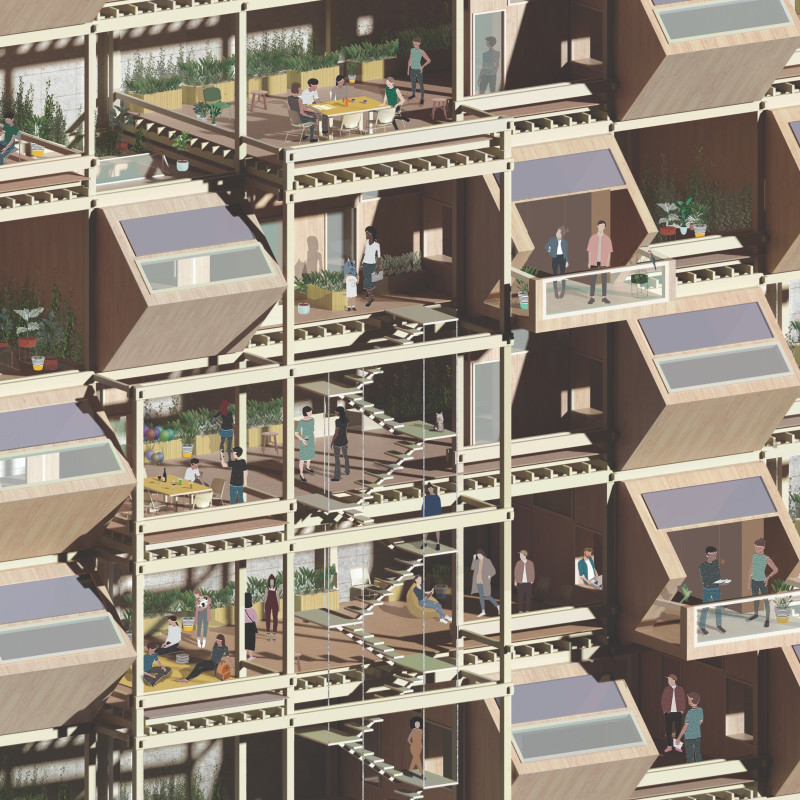5 key facts about this project
The SpaceShare design addresses the complexities of urban life in cities where space is limited. Situated in bustling city centers, the focus is on rethinking residential units to enhance their function and promote sharing among residents. The main idea centers on flexibility, allowing spaces to adapt to the diverse needs of users and their lifestyles.
Flexible Living Units
The design incorporates living units that can change in size based on user requirements. A standard 25 m² unit can expand to 50 m² or more, creating options for different living arrangements. This adaptability is important in urban areas where every square meter counts. It allows residents to use space more efficiently and responds to their daily activities.
Community Engagement Spaces
The design also features shared areas that encourage social interaction. These communal spaces invite residents to connect with one another, fostering a sense of community. By integrating these social environments into the design, the project seeks to combat the feelings of isolation often felt in city living, making the urban experience more enjoyable.
Innovative Space Optimization
One of the practical solutions in the design is the use of integrated furniture that folds into walls when not in use. This feature helps open up floor space, allowing residents to maximize their living areas. The approach promotes a clutter-free lifestyle where comfort and space are prioritized.
Space Integration and Contextual Adaptability
The units can be easily integrated into many urban settings, whether they are existing buildings, standalone sites, or vacant lots. This ability to adapt showcases how the design responds to the unique challenges presented by different urban environments. Each unit supports a practical solution to occupying space without losing the essence of community.
With a focus on dynamic living conditions and the freedom to adjust both private and shared spaces, the design ensures that every resident can customize their experience while living in a shared framework.
























































